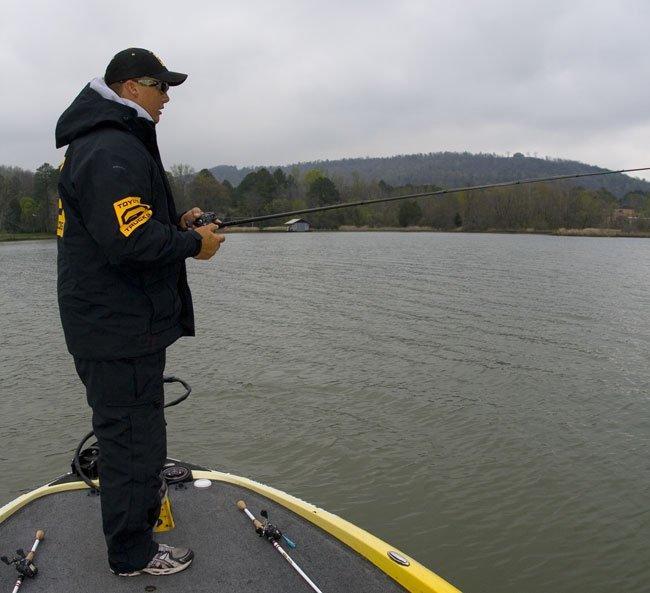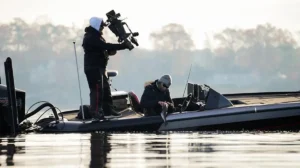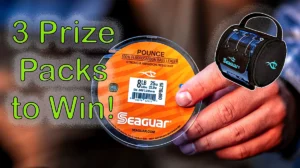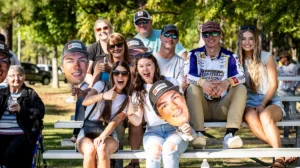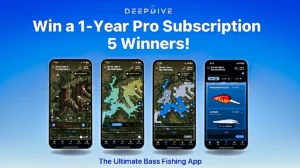Throughout the history of bass fishing, there have been a handful of baits that have become essential to every angler’s arsenal. A bait that you just can’t leave home without. One that catches fish throughout the year. A bait that falls in the same category with the jig, spinnerbait and plastic worm. One such bait that produces tons of bites, especially in the fall, is the lipless crankbait.
The versatility of the bait is no doubt the reason it has such a strong following with anglers all over the country. It can be fished throughout the water column and around all types of cover. Available in a plethora of shapes, sizes, colors, and sounds, just selecting the right rattle bait can be a daunting task. Pair this with the different lines, rods and various cover scenarios and fishing a lipless crankbait becomes a lot more complicated than just chunking and winding.
For Toyota Tundra pro and Florida native Terry Scroggins, the first factor is geographical.
“It really all depends on what part of the country you’re in,†said Scroggins.
For grass lakes like Lake Guntersville, Scroggins likes to throw an Excalibur Xr50 with braided line. The braid may cost you a few bites, but overall it will increase your hook-up ratio. Also when fishing the grass, braided line is a must since its low stretch allows Scroggins to rip the bait out of the grass. This triggers many of the strikes in this style fishery.
The same pattern of reeling the bait right along the grass can be used down in Florida on lakes like Toho and Okeechobee. One way to garner more bass when fishing an area for multiple days is by changing up the sound of your bait. In situations where Scroggins feels there are still bass in an area, he’ll swap to an Excalibur One Knocker, a bait with the same profile but a much more defined singular sound.
“There are a lot of lipless crankbaits on the market, but the One Knocker is extremely different. The sound that it offers is unique. That alone will get you a lot more bites sometimes,†Scroggins said.
With lakes in the south that have shell beds, Scroggins will move up a size to the 3/4-ounce Excalibur Xr75. Using a “yo-yo†retrieve, he will simply throw the bait out and let it sink to the bottom, lifting it once it hits bottom then letting the bait fall again.
“Keep your rod in about a 10 o’clock position and lift it to about a 12 o’clock position, just pumping it up off the bottom and letting it fall,†said Scroggins.
When employing this technique, most of the strikes will come on the fall. Both braid and fluorocarbon have their advantages with this technique, though the fluorocarbon is easier to use and may allow more bites. The braid definitely increases the hookup ratio since most of the bites come on the fall, and the hookset has to be extremely quick.
When the shell beds are along ledges on lakes like Kentucky and Wheeler, Scoggins will parallel the ledge and throw at a 45-degree angle on top of the ledge where he can work the bait back along the ledge gradually letting it fall into deeper water. Most of the bites will come right when the bait makes the initial drop from the top of the ledge.
Small modifications to the presentation can increase the number of bites and hookups, especially when fishing grass and yo-yoing the bait. Scroggins always moves up a hook size when fishing these two patterns. He’ll also attach a 15′ fluorocarbon leader to his braid.
“I think it’s important to have a fluorocarbon leader tied on to your braid. To me I think it gets you a few more bites,†Scroggins said.
Scroggins uses 15-pound High Seas Fluorocarbon and 30- to 40-pound braid.
Once the baitfish reach the pockets, Scroggins will follow suit. He’ll cover water with either a Xr25 or Xr50 depending on the size of the particular baitfish. This is as simplistic as the retrieve gets for him but a little inconsistency still goes along way.
“Just like you would do with a diving crankbait, with the stop and go retrieve, I’ll do the same with that lipless,†said Scroggins.
This stop-and-go method will often trigger fish that have located the bait and are trailing it. A falling rattle bait looks a lot like a dying shad. When the bait suddenly stops right in front of their face, they basically run into it and will often go ahead and strike.
Scroggins relies heavily on the “anything different†pattern when targeting bass in the fall. The basic principal that keys fishermen in on stumps, docks, brush or any other cover is that what they’re fishing is different from the surrounding habitat. So when Scroggins is targeting fish on a flat he will look for a ditch running through it. This ditch or channel will group fish up just like a ledge will farther offshore.
Scroggins keeps his color choice pretty simple in the fall. Water clarity is the determining factor. If the water is stained, he’ll throw a blue back chrome, a light gold or ghost which is a clear brown. In dirty water he reverts to a Lemon Lime color which won him a BASS Open back in 2007 on Lake Toho.
Rod choice is dependent on the particular employment of his lipless crankbait.
“I use a little stiffer rod than most people do, especially if I am yo-yoing an Xr75,†Scroggins said.
For this technique he’ll use a Duckett Micro Magic 7′ 3†Medium Heavy. Length is important because it allows you to pull back and hook the fish when you feel that bite on the fall.
When covering water with an Xr25 or Xr50, he will typically go with a 7′ Medium action Duckett Micro Magic rod. He uses straight 12- to 15-pound High Seas fluorocarbon with this technique.
Remember in the fall, even though the main focus is moving shallow with the bait, there are still fish to be had on the ledges, shell beds and grass lines of the main lake. Experimenting with different locations and retrieves is the best way to locate fish and trigger strikes. Don’t give up on the lipless crankbait too soon. If the bass aren’t reacting to a steady retrieve, try pausing, pumping or yo-yoing the bait.
When offshore or in the grass, use braid and bigger hooks for an increase in hookups. For more bites, try incorporating a fluorocarbon leader. Match the hatch with size and color when covering water shallow but look to do something a little different if the fish are heavily pressured.
Fall bass fishing can be some of the best all year, and the lipless crankbait should always be rigged and ready to be a part of it. These tips and time covering water with a productive bait like the lipless crankbait will make your search for the right bass more fruitful.


